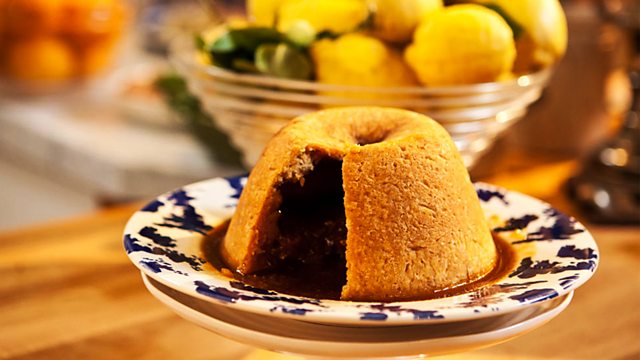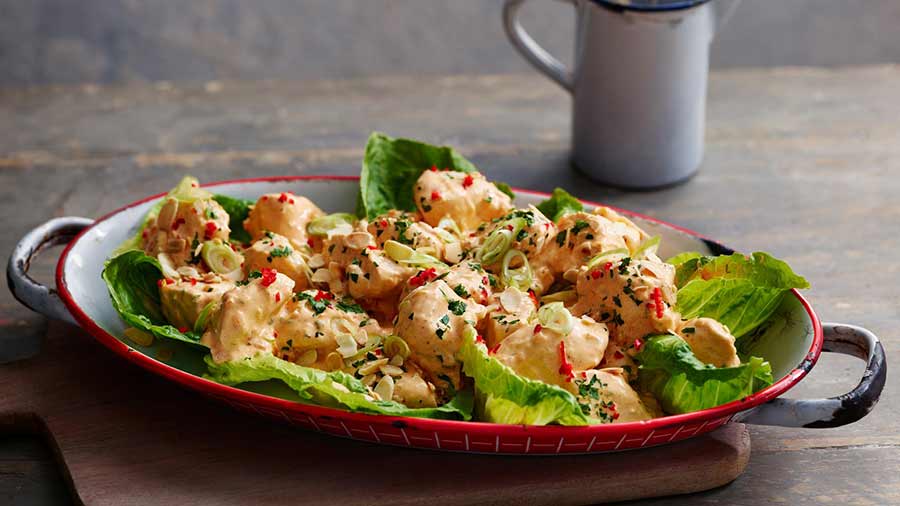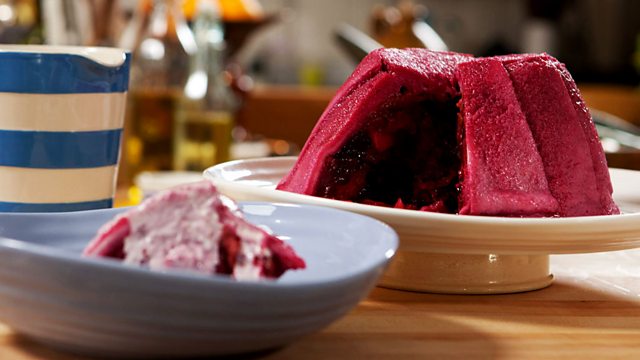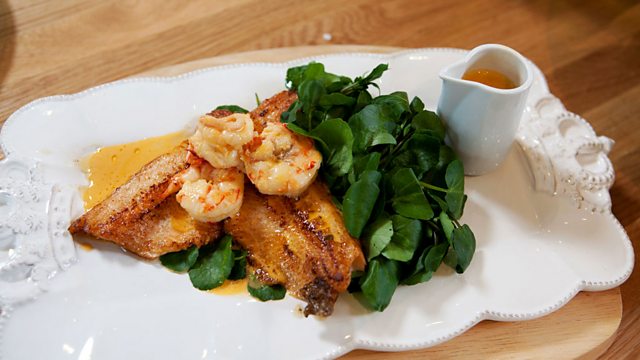Hairy Bikers’ Best of British episode 15 – Puddings: The hairy duo create some classic puds and explore the history and traditions behind our favourites.
Whether savoury or sweet, the British love puddings. There is no point in counting calories with delicious puds but the bikers do try and burn some off when they take part in the world black pudding throwing competition in Lancashire. Stunning food and fascinating stories told by the popular culinary duo. The bikers continue their culinary journey through time as they celebrate British food.
David Myers and Si King collectively known as the Hairy Bikers, are British television chefs. They have presented a range of television shows that combine cooking with the travelogue format, mostly for the BBC but also for the now-defunct Good Food channel. They have also produced a range of cookery books published to accompany their various television series.
Myers and King have known each other since the 1990s, with both having backgrounds in television production. Their first appearance on UK television was as presenters of The Hairy Bikers’ Cookbook, which began on the BBC in 2004 and continued for four series.
The followed this with The Hairy Bikers’ Food Tour of Britain, The Hairy Bikers’ Mums Know Best, Hairy Bikers’ Meals on Wheels, Hairy Bikers’ Best of British, The Hairy Bikers’ Bakeation, Hairy Dieters: How to Love Food and Lose Weight, The Hairy Bikers’ Asian Adventure, The Hairy Bikers’ Northern Exposure and The Hairy Bikers’ Pubs That Built Britain for BBC Two, and The Hairy Bikers’ Mississippi Adventure for Good Food.
Hairy Bikers’ Best of British episode 15 – Puddings recipes
Lemony pond pudding
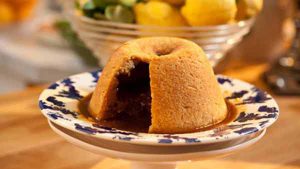
Try a traditional English dessert with tangy slices of lemon in a rich butterscotch sauce. Serve with double cream or ice cream.
Method
- Grease a 900ml/1½ pints pudding basin and line the base with greaseproof paper.
- For the pastry, put the flour, breadcrumbs, suet, orange zest and sugar in a large bowl and mix together lightly. Pour the orange juice into a jug and add enough cold water to make it up to 200ml/7fl oz.
- Pour the liquid onto the suet mixture and stir with a wooden spoon until the dough comes together and forms a ball. Knead very lightly on floured surface for a few seconds until very soft and pliable.
- Break off roughly two thirds of the dough and form into a ball. Roll out a circle of 5mm/¼in thickness. Use the dough to line the inside of the basin, leaving the excess overhanging the sides. Keep the remaining third of the dough for the lid.
- Sprinkle two tablespoons of the sugar into the lined basin and dot with a 4-5 cubes of butter. Cover with two of the lemon slices. Repeat the layers until all the ingredients are used, adding a little extra to each layer as the basin becomes wider.
Method part 2
- Roll out the reserved pastry on a lightly floured surface. Brush with water and place over on top of the pudding. Press the pastry edges together firmly to seal the pastry onto the pudding basin. Trim any excess pastry.
- Cover with pleated greaseproof paper and aluminium foil. Tie the pudding tightly around the rim with a long piece of string.
- Place on a trivet or upturned saucer in a very large saucepan and add enough just-boiled water to rise halfway up the sides of the basin. Cover and bring to the boil. Reduce the heat to a simmer and cook for 3 ½ hours, topping up the water when necessary.
- Remove the basin carefully from the water and stand for three minutes. Remove the string, foil and paper. Loosen the sides of the pudding with a round-bladed knife. Invert the pudding onto a plate (The pudding will look slightly sunk on the top and the pastry should be golden.) Serve with lashings of double cream or ice cream.
Gammon and pease pudding in Hairy Bikers’ Best of British episode 15
Pease pudding complements the saltiness of gammon perfectly in this classic English dish.
Method
- Rinse the peas in a sieve under cold running water and drain. Put the peas in a bowl and cover with hot water. Leave to stand for 20 minutes.
- Heat 25g/1oz of the butter in a heavy-based frying pan and cook the onion, thyme and bay leaf very gently for 15 minutes, or until softened and only just beginning to colour. Stir regularly.
- Drain the peas and add to the pan. Pour over 1 litre/1¾ pints water and bring to the boil. Reduce the heat slightly and simmer for 30-40 minutes, or until the peas soften and start falling apart. The liquid should be well reduced by this time.
- Meanwhile, put the gammon in a large lidded saucepan and cover with cold water. Bring to the boil then discard the water (be careful as it will create a lot of steam). Cut the onion in half and stud each piece with cloves.
Method part 2
- Take the peas off the heat, remove the bay leaf and blend with a hand blender until a thick purée. Beat in the remaining butter nutmeg and the egg. Season with salt and freshly ground black pepper.
- Spoon the pea mixture into the centre of a piece of muslin. Tie the ends tightly with kitchen string just above the peas, allowing a little room for expansion.
- Tuck the pease pudding and onion into the pan beside the gammon. Add the carrot, celery, bay leaves and peppercorns. Fill the pan with enough cold water to cover the gammon and return to the hob. Bring to a simmer, cover loosely with a lid and cook for 1-1¼ hours.
- Remove the gammon and place on a board. Cover with foil and a couple of tea towels. Leave to stand for 10 minutes before carving. Ladle 300ml/10fl oz of the gammon stock into a heatproof jug.
- For the mustard sauce, melt the butter in a heavy-based saucepan over a medium heat. Stir in the flour and cook for a few seconds before slowly adding the reserved stock, stirring well between each addition. Bring the sauce to a simmer, stir in the mustard and then the cream. Season, to taste, with salt and freshly ground black pepper.
- Carve the gammon into thick slices. Unwrap the pease pudding and transfer to a warmed serving bowl. Serve a spoonful of pease pudding with a slice of gammon and drizzle over the sauce.
